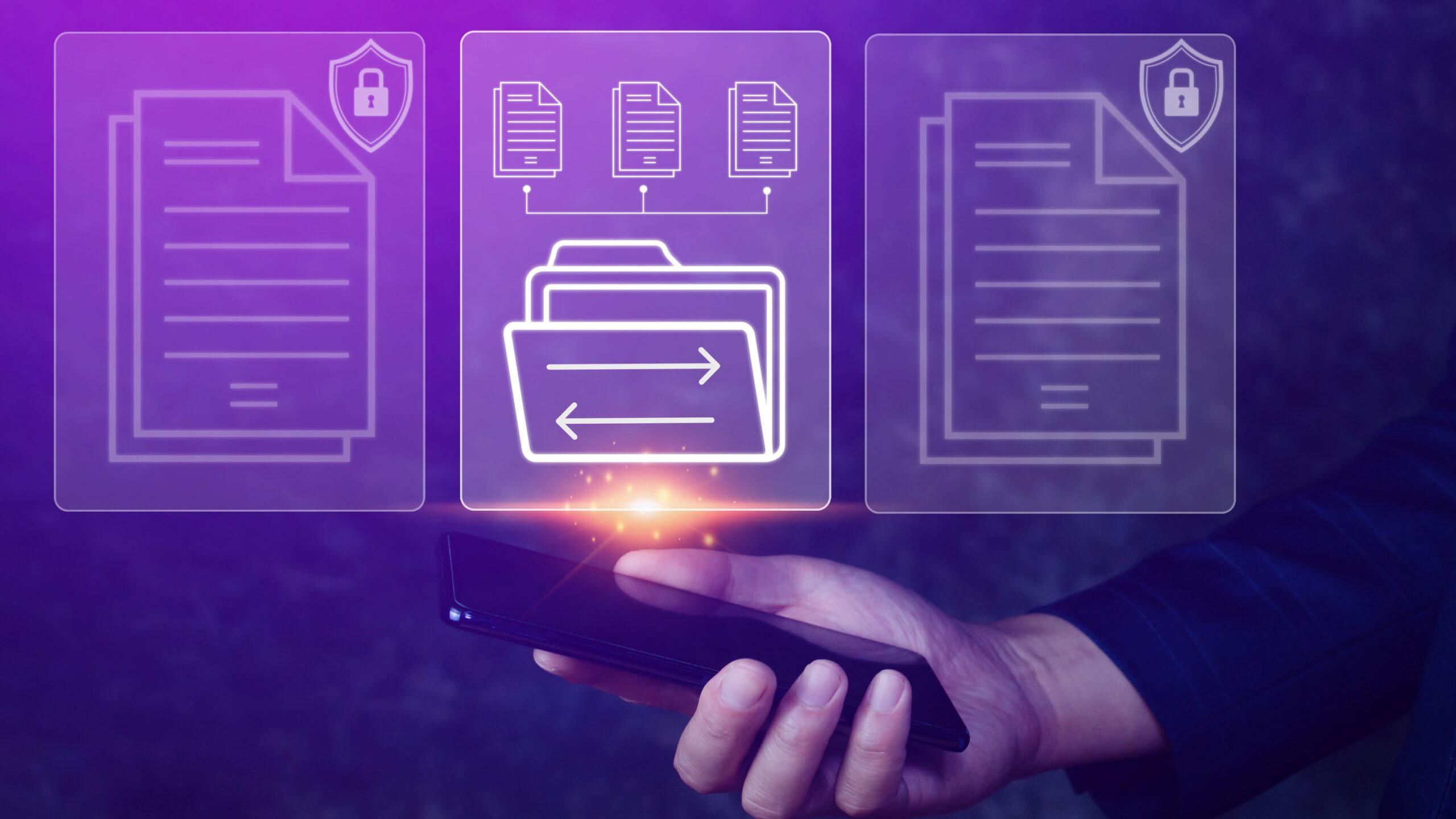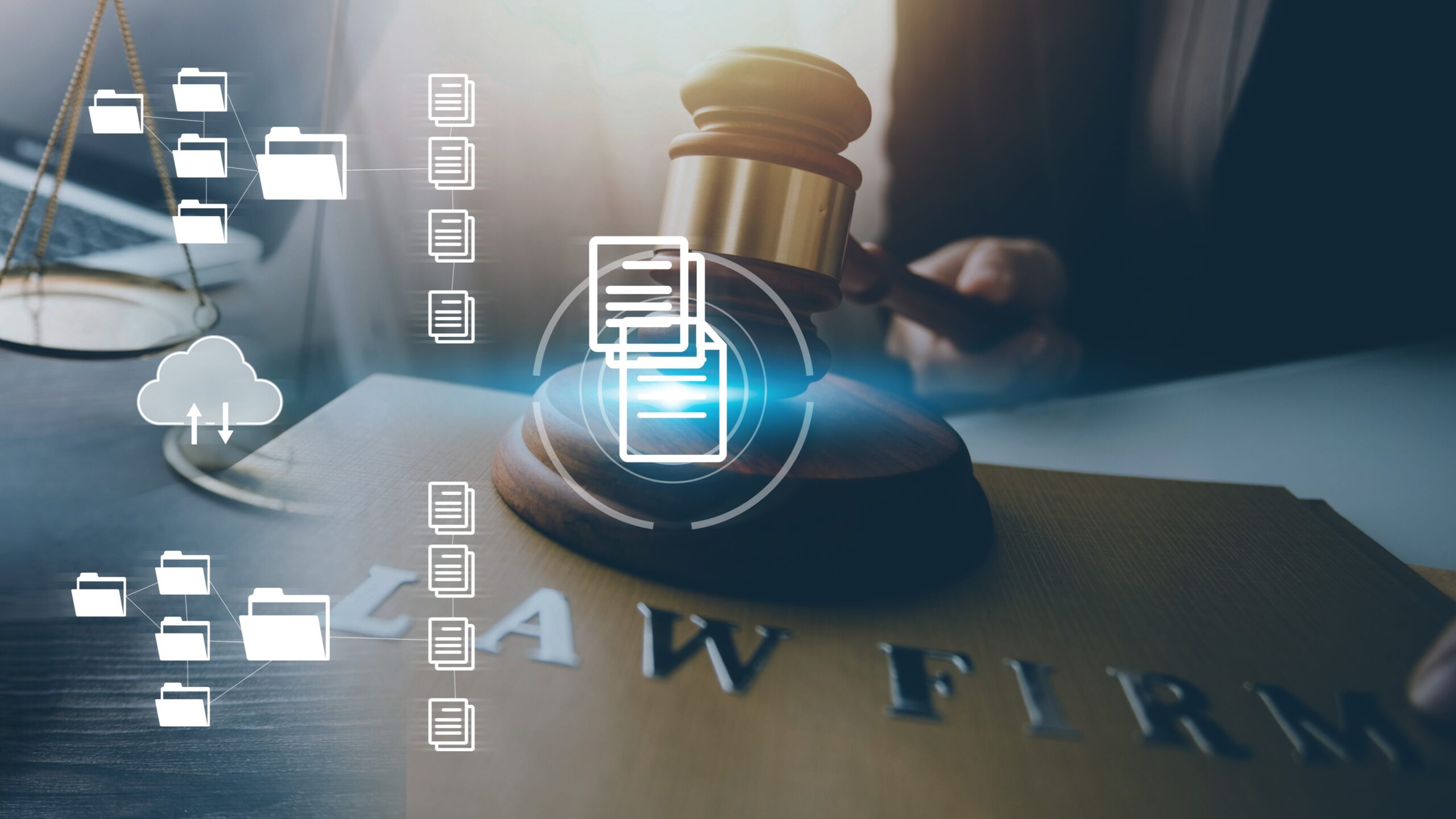Let’s be real—tax documents are a hacker’s jackpot. Think about it: they’ve got your Social Security number, income details, maybe even your bank info. In the wrong hands, that’s a one-way ticket to identity theft. Sharing them carelessly? It’s like handing your house keys to a stranger.
Common Methods People Use (and Why They’re Risky)
Email Attachments – A Hacker’s Dream
Email might feel like the easiest way to send tax documents. After all, we use it every day, and attaching a file only takes a few clicks. But here’s the issue: most email providers don’t offer built-in encryption for attachments. That means your tax documents travel through the internet in plain text unless you take extra steps. It’s like writing down your Social Security number on a postcard and dropping it in a public mailbox—anyone handling that postcard along the way could read it.
Even worse, if your inbox or your recipient’s inbox gets compromised, the attached files are accessible to the hacker. Many people reuse passwords or fall for phishing scams, making email accounts a common target. Once a bad actor is inside, they can quietly grab sensitive files and sell them on the dark web or use them for identity theft. Email is fine for sharing cat pictures—not for confidential tax information.
USB Drives – Not As Safe As You Think
USB flash drives, or thumb drives, seem more secure because they’re physical devices. You might think, “I’ll just put the files on a USB and hand it over.” While it’s true that there’s no internet involved during transfer, USBs come with their own set of serious risks. They can be easily lost, stolen, or damaged. If someone picks up your unencrypted USB, your tax information is exposed instantly, with no passwords or barriers to stop them.
Another problem is malware. USB drives are infamous for spreading viruses if plugged into an infected machine. This can lead to compromised files or backdoor access into your systems. Lastly, relying on physical delivery isn’t always practical or timely—especially if your accountant is in another city or state. In the digital age, USBs are more of a liability than a safe option.
Cloud Drives (Google Drive, Dropbox) – Secure Enough
Cloud storage platforms like Google Drive and Dropbox are popular because they’re fast, free (or low-cost), and easy to use. You can upload your tax files and send a shareable link within seconds. But convenience doesn’t always mean security. These services are only secure if you use them properly. Many people mistakenly leave sharing settings wide open—meaning anyone with the link can access the files, and those links can be forwarded, shared, or even discovered online.
Another concern is that while these services offer encryption, it’s often not end-to-end encryption. This means the service provider could technically access your files, and if their servers are ever breached, your documents might be exposed. For better security, you should always:
- Set file permissions to “specific people only”
- Require login access
- Add expiration dates on links
- Use two-factor authentication on your account
Used carefully, cloud drives can be secure—but if misused, they’re a huge risk.
The Gold Standard – Encrypted File Sharing
What Is Encryption and Why Does It Matter
Encryption is the process of converting your readable data—like tax documents—into a scrambled format that only authorized users can decode. It acts like a digital safe for your files. When done correctly, encryption ensures that even if someone intercepts your files during transfer, all they’ll see is meaningless code. The only way to unlock it is with the proper decryption key, usually in the form of a password or digital certificate.
This matters because tax documents contain highly sensitive information: Social Security numbers, bank account info, income details, and more. If a hacker gets their hands on unencrypted documents, they can open new credit cards in your name, file fake tax returns, or worse. Encryption protects you from this kind of identity theft and financial loss. It’s not just techy jargon—it’s a must-have shield for sending important documents.
End-to-End Encryption vs. Basic Encryption
Not all encryption is created equal. Basic encryption often covers only part of the process—like encrypting files when stored (“at rest”) or while traveling across the internet (“in transit”). But end-to-end encryption (E2EE) goes one step further: it ensures that only you and the intended recipient can decrypt and view the data. Even the service provider can’t access it—not even if they’re subpoenaed or hacked.
Here’s a quick comparison:
- Basic encryption = Data is secure in motion or at rest, but potentially visible to the platform provider.
- End-to-end encryption = Data is encrypted on your device and only decrypted on the recipient’s device. Nobody else can peek in between.
Use end-to-end encryption whenever possible, especially for sensitive tax documents. Here are some tools that support E2EE:
- ProtonMail – Encrypted email platform, user-friendly and free
- Tresorit – Cloud storage with end-to-end encryption built-in
- Signal – Secure messaging app that can be used to send encrypted files
- SpiderOak One Backup – Great for encrypted file storage
If you’re serious about privacy and protecting your financial identity, E2EE is the gold standard. It’s like having a personal armored truck for your digital information.
Best Practices for Sending Tax Documents Securely
Use Password-Protected PDFs
One of the simplest yet most overlooked methods for securing your tax documents is converting them into password-protected PDFs. Most modern scanners and PDF editors (like Adobe Acrobat or even free tools like PDF24) offer the ability to add password protection right before saving. This gives you immediate control over who can open your documents. The key here is the strength of the password—avoid using obvious combinations like birthdays, names, or the ever-popular “123456.” Go for a mix of uppercase and lowercase letters, numbers, and special characters to make it truly secure.
Using password-protected PDFs adds a solid layer of defense when combined with other measures like encrypted email or secure cloud sharing. Even if the file somehow ends up in the wrong hands, it becomes nearly impossible to open without the correct password. That said, remember to share the password through a different communication channel—like telling it over a phone call or sending it via a secure messaging app—never in the same email with the file. Otherwise, you’re defeating the purpose of having the password in the first place.
Compress and Encrypt (ZIP/RAR with AES)
Another excellent method for protecting your tax files is by compressing them into a ZIP or RAR file and encrypting it with AES-256 encryption. This isn’t just about saving space—it’s about adding industrial-strength security to your data. Tools like 7-Zip (free and open-source) or WinRAR allow you to not only compress but also encrypt files using strong algorithms that are nearly impossible to crack. AES-256, in particular, is used by governments and financial institutions around the world for its strength and reliability.
What makes this method particularly powerful is its flexibility. You can bundle multiple tax documents into one archive, encrypt it, and add a password—making transfer simpler and more secure. Just like with password-protected PDFs, make sure you don’t send the encryption password through the same channel. Use phone, SMS, or a different secure messaging app to keep your credentials safe. Also, avoid storing the compressed file on shared computers or public drives unless those are equally protected.
Two-Factor Authentication (2FA) Is a Must
Two-factor authentication (2FA) is no longer optional—it’s essential. Whether you’re using email, cloud storage, or any file-sharing platform, enabling 2FA adds an extra wall of protection to your account. The idea is simple: even if someone steals your password, they still can’t access your account without the second verification step—usually a code sent to your phone or generated by an app like Google Authenticator. Think of it as locking your door and then arming an alarm system on top.
In the context of tax documents, where your files contain Social Security numbers, banking info, and income details, 2FA becomes your digital insurance policy. A compromised account without 2FA can lead to immediate exposure of your most sensitive information. Platforms like Dropbox, Google Drive, and even email services like Gmail and ProtonMail all offer 2FA for free—just go into settings and turn it on. It’s quick, painless, and could save you from a financial disaster.
| Method | Security Strength | Ease of Use | Recommended For |
| Password-Protected PDFs | Medium to High | Very Easy | Simple document sharing with minimal setup |
| ZIP/RAR with AES Encryption | Very High (AES-256) | Moderate | Bundling multiple files securely |
| Two-Factor Authentication | Extremely High (Account-Level) | Easy to Moderate | Any account used to send/receive files |
Top Tools and Platforms for Secure Sharing
Secure File Transfer Services
Professional file transfer services are a step up in both encryption and user control. Citrix ShareFile is a prime example, offering bank-level security protocols and a user-friendly interface built specifically for accountants, lawyers, and financial professionals. With ShareFile, you can send large files securely, track file access, and even request signatures—all within a secure ecosystem. It’s a paid service, but for people dealing with highly confidential information like tax documents, it’s worth every penny.
Another strong option is WeTransfer Pro, which improves upon the popular free version by letting you set passwords, expiry dates, and recipient-specific access controls. This is perfect if you’re sending files to clients or accountants and want peace of mind that your data won’t be floating around the internet. The user experience is extremely streamlined, which is great if you’re not particularly tech-savvy but still need a secure solution.
Encrypted Email Platforms
Email remains a primary method of communication, but if you’re sharing tax documents, you’ll want to switch to an encrypted email provider. ProtonMail, based in Switzerland (a country with strict privacy laws), is one of the best in the game. It offers automatic end-to-end encryption, meaning even ProtonMail itself can’t read your messages or attachments. The platform is clean, easy to use, and free for basic accounts. If both sender and receiver use ProtonMail, the security is airtight.
Another solid contender is Tutanota, which also offers full encryption and does not store IP logs or other identifying information. It’s open-source, privacy-focused, and designed to be as easy to use as Gmail. One bonus with Tutanota is that it allows encrypted messages to non-users via a secure link and password system. If you’re sending tax info to someone who’s not very tech-literate, this makes the process painless and safe.
Cloud Storage With Security in Mind
Traditional cloud storage solutions like Google Drive or Dropbox are fine, but if you want truly secure cloud sharing, platforms like Sync.com and Tresorit are better choices. Sync.com offers zero-knowledge encryption, which means even they can’t access your files. It’s also based in Canada, where privacy laws favor user rights. With automatic syncing, version history, and encrypted file sharing, it’s perfect for handling sensitive tax documents.
Then there’s Tresorit, which has earned a reputation for being one of the most secure cloud services available. Its zero-knowledge architecture ensures that no one—not even Tresorit—can access your files. Designed with businesses and professionals in mind, Tresorit offers compliance with GDPR and HIPAA, making it ideal for tax professionals and individuals who want a fortress around their financial data. The user interface is sleek and modern, and while it comes at a premium price, the level of protection is unmatched.




